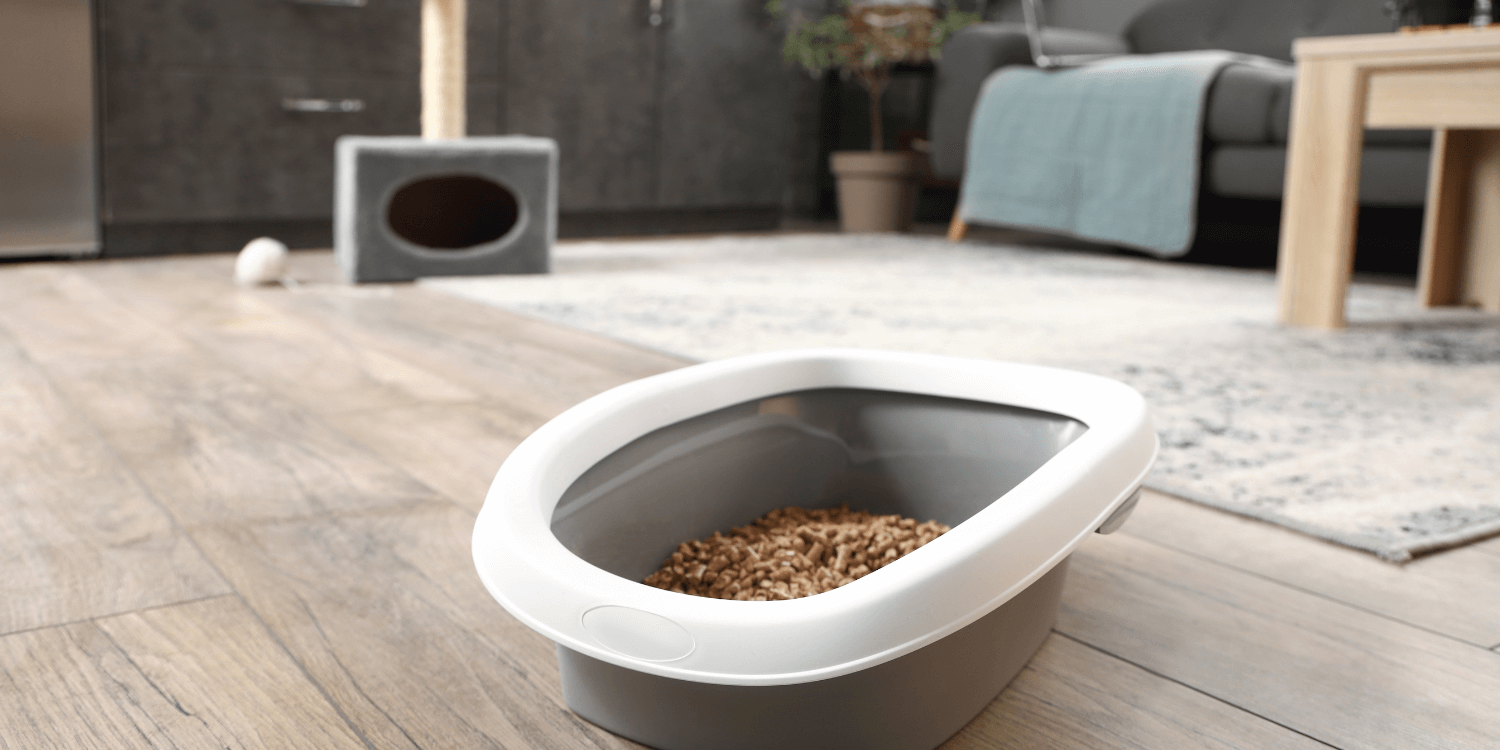Ragdoll Cat Shedding Guide
If you’re thinking of getting a ragdoll cat or two (or three!), you’re probably wondering about ragdoll cats and shedding.
Do ragdoll cats shed a lot? How often do you need to groom them? Will your house be covered in fur?! We answer all your ragdoll cats and shedding questions below.
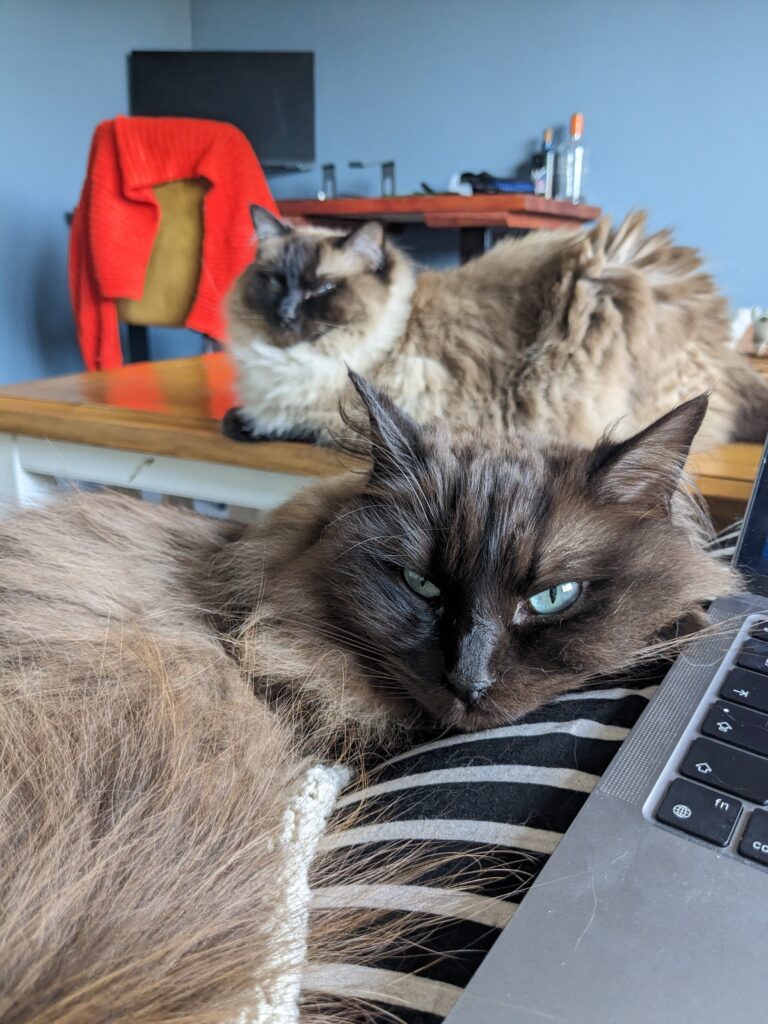
Do Ragdoll Cats Shed A Lot?
Due to their fluffier-than-your-average-cat’s fur, ragdoll cats can shed a lot.
However, their fur is typically a lot smoother than a short haired cat and if you use the right brush for ragdoll cats and groom them regularly their shedding shouldn’t be too much of an issue.
In my experience, when I owned a short haired cat (my first cat, Stanley, who I miss every day!), he malted just as much as my two ragdolls. If anything, his fur was spikier and it used to get onto my clothes, the carpets and couches a lot more.
Here’s our seal sepia ragdoll cat, Teddy, holding his favorite slicker grooming brush!
He purrs and rolls around when I groom him. So, even if you need to groom your ragdoll cat more often, it’ll be an enjoyable experience for you and for them!
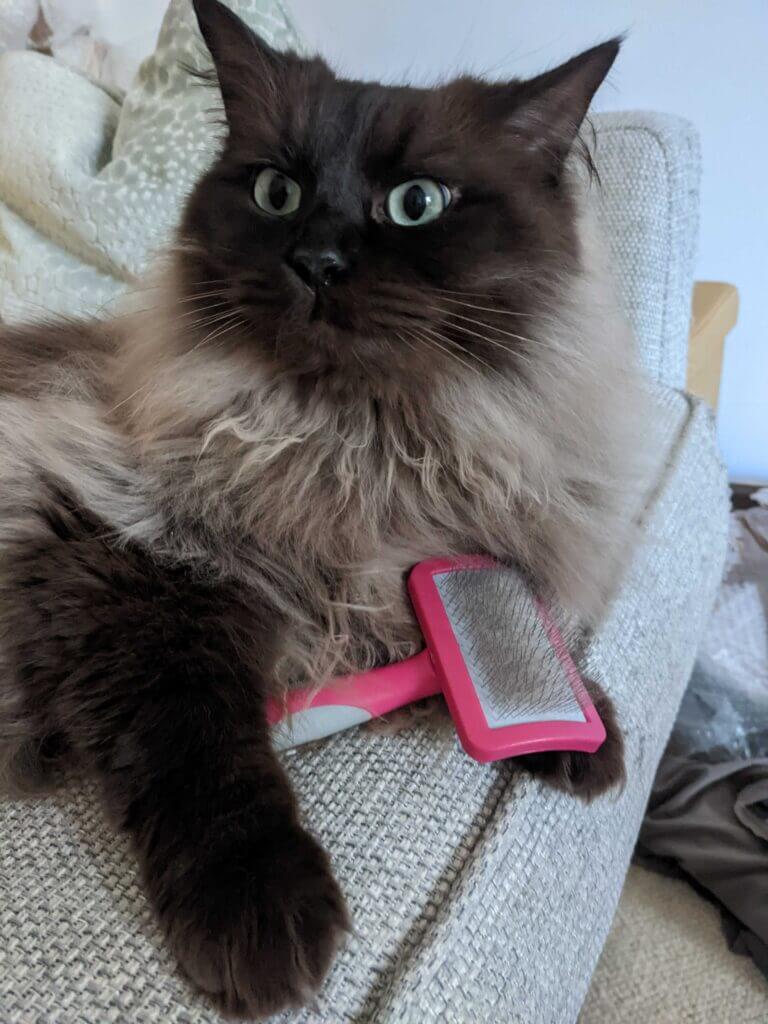
Why Do Ragdoll Cats Shed?
Like all cats, Ragdoll cats have a natural shedding cycle that helps them maintain the health of their coat. However, due to their thick and dense fur, ragdolls may shed more than other breeds.
How Much Do Ragdoll Cats Shed?
The amount of shedding from your Ragdoll cat will vary depending on factors such as age, diet, and overall health. It can also vary from ragdoll to ragdoll based on their fur type, personality and behavior. For example our little guy, Teddy, needs more support when it comes to grooming as his fur is “mink” meaning it’s smoother and finer and therefore more prone to getting tangled.
Will Your House Be Covered In Fur?!
Generally speaking, ragdoll cats shed the most during the spring and fall seasons when they are transitioning between their winter and summer coats.
However we’ve sometimes found our house is more covered in the summer months, particularly if we have a hot summer. We live in the UK though so it’s not always that hot here! Either way you’ll likely find that in the winter months your house is covered in less fur.
However, we’ve not found our house is ever ‘covered’ in fur. The worst is getting their fur on our clothes – so it’s worth investing in a decent lindt roller! We recently invested in the Chom Chom Roller Pet Hair Remover and I have not looked back!
I’ve tried so many rollers- the sticky ones, the metal ones, and in my experience the Chom Chom (love the name too!) is by far the most effective roller for pet hair removal we’ve found.
How Often Do You Need to Groom Ragdoll Cats?
As we touched on earlier, how often you need to groom your ragdoll cat or cats will depend on your ragdoll’s behavior, as well as their fur type.
For example, our seal point ragdoll, Mr.Fudge, is very independent when it comes to grooming. He grooms himself multiple times a day and his coat is always so soft and clean.
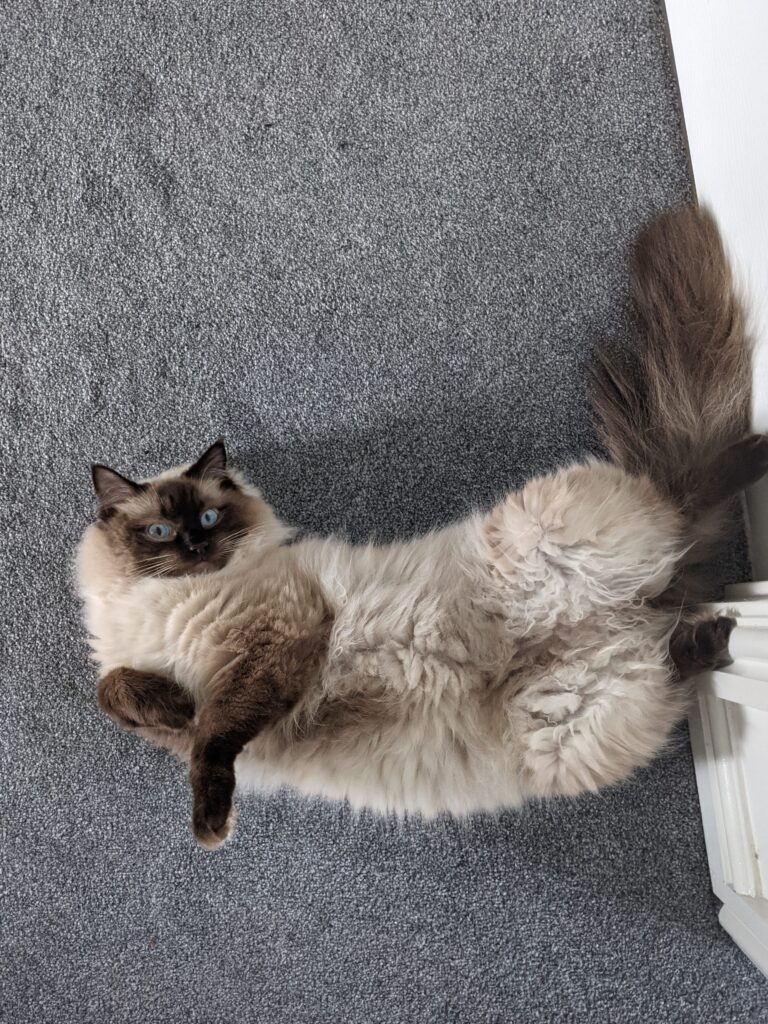
Therefore, we don’t need to groom him that regularly – typically I’ll give him a quick brush once or twice a week, using a slicker brush and/or grooming gloves, which are the two best brush options we’ve found.
I also do other checks during this time including cutting his claws if required. I use this style of nail clippers as I’ve found they are the easiest and safest to use.
In comparison our sepia ragdoll cat, Teddy, isn’t as good at grooming himself and needs a lot more support!
His fur type is also ‘mink’ which means it is softer and finer, but also more prone to tangling. Again, we use the slicker brush which gets to the more tangled areas, with the grooming gloves helping to remove the surface level fluff.
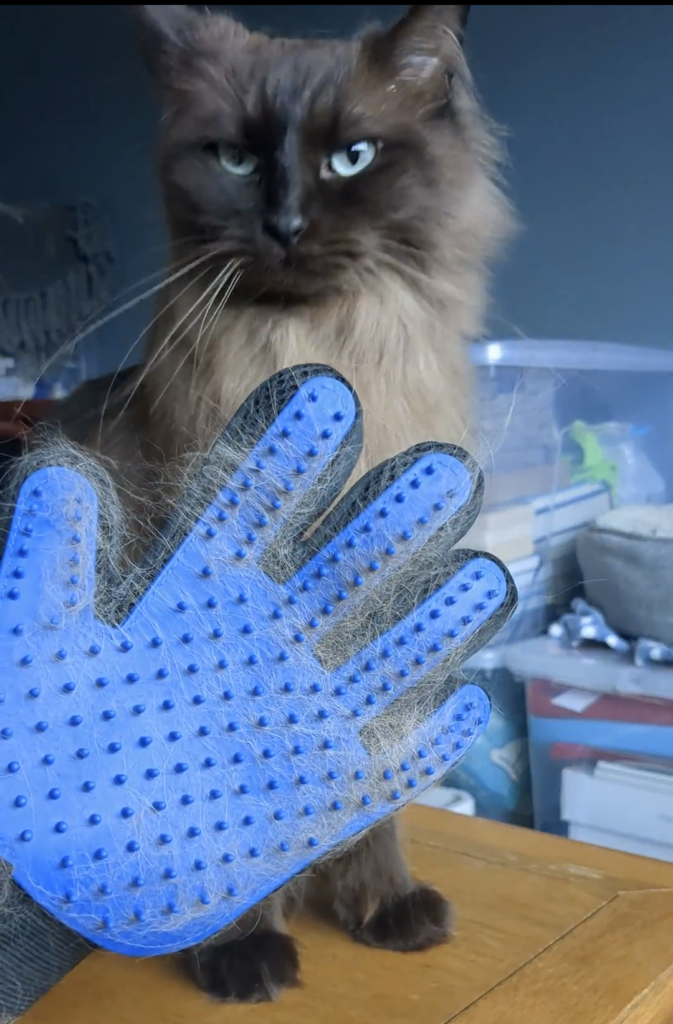
We groom Teddy two or three times a week and because of his fur type, we regularly have to cut out some of the larger tangles and occasionally wet his fur and brush it. I use these grooming scissors for cats to remove any matted pieces of fur, but you do need to be extremely careful when cutting out their fur because it’s so close to their skin.
It’s also typical that the older your ragdoll cat gets the more help they need with grooming because they might not groom themselves as often.
What’s The Best Brush for Ragdoll Cats?
We’ve tried a lot of different brushes for ragdolls over the last few years and for both of our boys we’ve found that a combination of using a slicker brush and grooming gloves works best for us.
Managing Shedding in Ragdoll Cats
While shedding is a natural and necessary process for cats, there are ways to manage it and help keep your home cleaner.
Here are some tips for managing shedding in ragdoll cats:
- Regular Brushing: Regularly brushing your cat’s fur will help to remove loose hairs and prevent them from spreading around your home. Use a soft-bristled brush and be gentle, as Ragdolls have sensitive skin.
- Proper Nutrition: Feeding your cat a high-quality diet with essential fatty acids can improve the health of their coat and reduce excessive shedding.
- Bathing: While cats are known for their cleanliness, giving your Ragdoll an occasional bath can help to remove loose fur and keep their coat healthy and shiny.
- Supplement with Omega-3s: Adding an omega-3 supplement to your cat’s diet can also improve the health of their coat and reduce shedding.
When Is Shedding a Cause for Concern?
While Ragdoll cats shed more than other breeds, excessive or sudden shedding can be a sign of underlying health issues. If you notice your ragdoll losing large clumps of fur, it is essential to schedule a visit with your veterinarian to rule out any potential health problems.
Conclusion
Ragdoll cats may shed more than other breeds, but with proper care and management, you can keep their shedding under control. Regular grooming and a healthy diet will not only reduce the amount of fur in your home but also help maintain the health of your beloved ragdoll.


